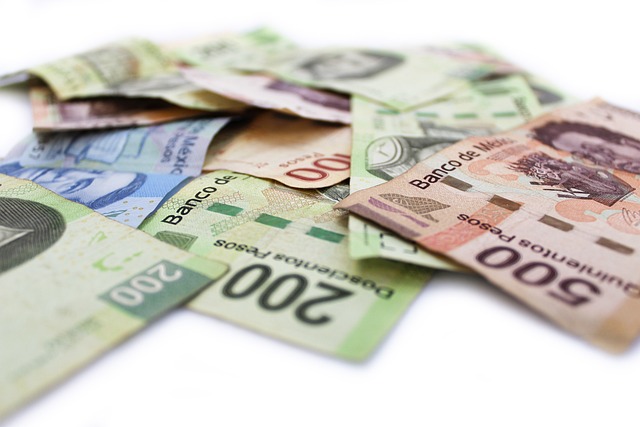In the world of trading, **Profit Factor** is a crucial metric used to evaluate a trader’s profitability. The Profit Factor is calculated by dividing the total gross profit from trades by the total gross loss, allowing for an objective assessment of a trading strategy’s profitability. In this blog post, we will explain the definition, calculation methods, ideal values of the Profit Factor, and its relationship with win rate and risk-reward ratio. Understanding the Profit Factor, an indispensable indicator for trading, will enable you to develop better trading strategies.
1. Definition and Importance of Profit Factor

The Profit Factor is a metric used to evaluate the profitability of a trading method or trading system. This indicator is a crucial factor when selecting systematic trading (especially EAs), but it can also be used as a criterion to judge effectiveness in discretionary trading.
The Profit Factor is defined as the ratio of “total gross profit” to “total gross loss” over a certain period. Total gross profit refers to the sum of all profits during that period, and total gross loss refers to the sum of all losses.
If the Profit Factor value exceeds 1, it indicates that the trades are profitable overall. Conversely, if the value is less than 1, it means that losses outweigh profits. In other words, a Profit Factor of 1 or greater indicates a potentially profitable method.
The reason for using this indicator is that it allows traders to objectively evaluate the performance of their trading strategies. By analyzing Profit Factor data, traders can identify areas for improvement and evolve into more efficient strategies. The Profit Factor is essential data for both EAs and discretionary trading.
2. How to Calculate Profit Factor

The calculation of the Profit Factor is very simple. Follow these steps:
- Calculate the total gross profit for a given period.
- Calculate the total gross loss for the same period.
- Divide the total gross profit by the total gross loss to calculate the Profit Factor.
Profit Factor = Total Gross Profit ÷ Total Gross Loss
For example, if you have a total gross profit of 1,000,000 JPY and a total gross loss of 500,000 JPY, the Profit Factor is calculated as follows:
Profit Factor = 1,000,000 JPY ÷ 500,000 JPY = 2.0
In this case, the Profit Factor is 2.0.
The minimum threshold for the Profit Factor must be 1 or greater. If the Profit Factor is less than 1, you will surely lose money, so caution is advised.
Generally, a Profit Factor of 1.2 or higher is considered excellent. While a higher value indicates greater profitability, for automated trading or EAs, a value between 1.2 and 1.5 is generally considered good.
However, if the Profit Factor is too high, the calculated value might be unreliable for the verification period. Caution is needed if the verification period is short.
While the Profit Factor calculation is straightforward and simple, it is a crucial indicator for objectively evaluating investment performance. Calculate and utilize the Profit Factor to assess how profitable your trading methods or systems are. It is also useful for validating historical data and improving trading strategies.
3. Ideal Profit Factor Values

The Profit Factor is an important indicator for evaluating the profitability of a trading strategy. However, there can be risks if the Profit Factor is extremely high. Generally, the ideal Profit Factor value is said to be “1.2 to 1.3”.
Here’s why this range is considered ideal:
1. Profitable (Above 1.0)
A Profit Factor exceeding 1.0 indicates overall profitability. For traders, generating profit is a fundamental requirement. If the Profit Factor is less than 1.0, the trading strategy is not making money.
2. Provides a Buffer
One reason why the ideal Profit Factor value is 1.2 to 1.3 is that it allows for a comfortable margin of profit. This buffer provides flexibility to the trading strategy. It also accounts for expenses such as slippage and commissions. If the Profit Factor is less than 1.0, there is no buffer, leading to uncertainty in the trading strategy.
However, a high Profit Factor is not always ideal. Especially in high-risk trades, the balance between risk and return is crucial.
Therefore, it’s important to set your target Profit Factor based on your trading style, strategy, and risk tolerance. The Profit Factor is just one indicator, and trading strategies should be evaluated from the perspective of overall trading performance and risk management.
It’s worth noting that the importance and meaning of the Profit Factor differ between EAs (automated trading systems) and discretionary trading. Since EAs execute trades based on pre-set rules, they tend to show consistent performance, and the Profit Factor is expected to stay within a certain range. In contrast, discretionary trading relies on the trader’s judgment, so performance can vary significantly depending on skill, experience, and market conditions. While the Profit Factor is still important in discretionary trading, it is even more crucial to evaluate trading strategies by considering overall risk management and the balance of profitability.
For these reasons, the ideal Profit Factor value varies depending on the trading style, strategy, and risk tolerance. Therefore, it is important to set an appropriate target Profit Factor based on your trading goals and risk management perspective.
4. Relationship Between Profit Factor, Win Rate, and Risk-Reward

Decomposition of Profit Factor
The Profit Factor can be broken down into **Win Rate** and **Risk-Reward Ratio**. The win rate indicates the probability of making a profit in a trade, and the risk-reward ratio represents the ratio of profit to loss. Thus, the Profit Factor is determined by these two elements: win rate and risk-reward ratio.
Profit Factor Formula
The Profit Factor can be calculated with the following formula:
Profit Factor = (Risk-Reward Ratio × Win Rate) ÷ (1 – Win Rate)
As this formula shows, if you know the values of the win rate and risk-reward ratio, you can calculate the Profit Factor.
Target Win Rate and Risk-Reward Combinations
The combinations of win rate and risk-reward ratio that result in a Profit Factor of 1.0 (break-even) are as follows:
- Profit Factor: 1.0
- Risk-Reward Ratio: 0.2
Win Rate: 83.3%
Profit Factor: 1.0
- Risk-Reward Ratio: 0.4
Win Rate: 71.4%
Profit Factor: 1.0
- Risk-Reward Ratio: 0.6
- Win Rate: 62.5%
The table above shows combinations that result in break-even. To actually make a profit, you need a win rate and risk-reward ratio that exceed these values. Combinations of win rate and risk-reward ratio for a Profit Factor of 1.5 can also be helpful.
These indicate the target win rate for a set risk-reward ratio and can be useful for improving your trading method.
Among the win rate and risk-reward ratio, the **risk-reward ratio** is the element that traders can directly control. Improving the risk-reward ratio while maintaining the win rate is a more practical approach.
This concludes the explanation of the relationship between Profit Factor, win rate, and risk-reward ratio. Next, let’s look at how to utilize these indicators.
5. How to Utilize the Profit Factor

The Profit Factor is crucial data for traders to objectively evaluate the effectiveness of their trading strategies and methods. Below, we will specifically introduce how to utilize the Profit Factor.
5.1 Evaluation Criteria for EAs (Automated Trading Systems)
The Profit Factor plays a significant role as a criterion for evaluating the performance of EAs (Expert Advisors or automated trading programs). The Profit Factor value is used to assess an EA’s performance and to confirm in advance whether it can generate the expected profits.
5.2 Indicator for Backtesting
In backtesting based on historical data, the Profit Factor is used as an important indicator. Major backtesting software, such as MT4/MT5, can automatically compile and calculate the Profit Factor. Using the Profit Factor value allows for an accurate evaluation when objectively assessing the effectiveness of your trading strategy or method. It also helps in reviewing trading methods periodically and adjusting them into more efficient strategies.
5.3 Relationship Between Profit Factor and Risk-Reward
The Profit Factor is an indicator for evaluating trading strategy performance and has a close relationship with risk-reward. A high Profit Factor indicates that there are more trades where profits significantly exceed losses. Therefore, a balanced risk-reward is also important to achieve a high Profit Factor. When constructing a trading strategy, it is necessary to achieve both an improved Profit Factor and optimized risk-reward.
5.4 Improving Profit Factor and Strategy Adjustment
From Profit Factor data, you can identify areas for improvement in your trading strategy and adjust it to be more efficient. A low Profit Factor means that the proportion of trades where profits significantly exceed losses is low. In this case, reviewing various elements such as trade entry points, profit-taking and stop-loss methods, and risk management can lead to an improved Profit Factor. By utilizing the Profit Factor to review strategy efficiency and identify areas for improvement, you can build a trading method that generates sustainable profits.
The Profit Factor is important data not only for EA evaluation but also for discretionary trading. Use it as an indicator to objectively evaluate your trading strategy’s performance and identify areas for improvement. This concludes the overview of how to utilize the Profit Factor. Properly using the Profit Factor will lead to improved trading performance and better risk management.
Summary
The Profit Factor is an extremely important indicator for traders. This metric is indispensable for objectively evaluating the profitability of trading methods and systems. By utilizing the Profit Factor, traders can discover areas for improvement in their trading strategies and evolve them into more efficient methods. The Profit Factor can be used in various situations, such as evaluating EA performance, backtesting, and analyzing its relationship with risk-reward. Traders who fully understand this indicator and apply it appropriately to their trading goals will be able to achieve long-term stable profits.
Frequently Asked Questions
What is the Profit Factor indicator?
The Profit Factor is an indicator used to evaluate the profitability of a trading method or trading system. It is calculated by dividing total gross profit by total gross loss. A value greater than 1 indicates profit, while a value less than 1 means losses outweigh profits. By using this indicator, traders can objectively evaluate the performance of their trading strategies, identify areas for improvement, and evolve into more efficient strategies.
How is the Profit Factor calculated?
The calculation method for the Profit Factor is very simple. First, calculate the total gross profit for a certain period, and then calculate the total gross loss for the same period. Afterward, divide the total gross profit by the total gross loss to determine the Profit Factor. For example, if the total gross profit is 1,000,000 JPY and the total gross loss is 500,000 JPY, the Profit Factor would be 2.0.
What is an ideal Profit Factor value?
Generally, an ideal Profit Factor value is considered to be between 1.2 and 1.3. This range indicates profitability and provides a buffer to cover expenses such as slippage and commissions. However, the appropriate target Profit Factor can vary depending on your trading style and risk tolerance, so it’s important to set it according to your own circumstances.
How can the Profit Factor be utilized?
The Profit Factor can be used in various scenarios, including evaluating EA performance, backtesting historical data, and analyzing the relationship with risk-reward. For EAs, it’s used for pre-performance evaluation, and in backtesting, it helps assess strategy effectiveness. By analyzing the relationship between the Profit Factor and risk-reward, you can build more efficient trading strategies. Furthermore, the Profit Factor’s value can help identify areas for improvement and assist in strategy adjustments.









